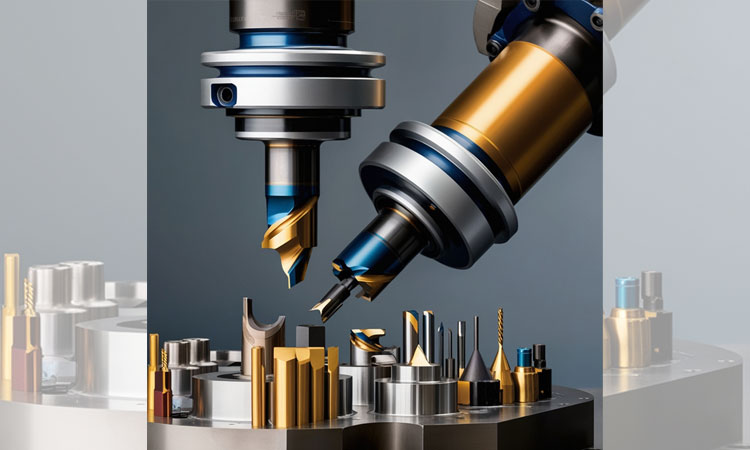The cutting tools sector, a critical enabler of global manufacturing, is poised for significant transformation in 2024. Valued at USD 23 billion in 2023-24, the global cutting tools market is projected to grow at a CAGR of 6%, driven by advancements in material science, manufacturing technologies, and automation. In India, the market is expanding at 7.5% annually, with robust demand from industries like automotive, aerospace, and renewable energy. As we step into 2025, several game-changing trends are shaping the future of the industry.
The Rise of Hybrid Tools
Hybrid cutting tools, which combine multiple functionalities in a single tool, are gaining traction. These tools enable manufacturers to perform multiple operations—such as drilling, milling, and threading—without tool changes, reducing machining time by 30% and boosting productivity.
According to a recent industry report, the global demand for hybrid tools is expected to grow by 12% annually, driven by industries prioritizing efficiency and cost reduction. In India, where SMEs dominate the manufacturing landscape, hybrid tools are particularly attractive for their ability to optimize operations with limited resources.
Multi-Functional Cutters: Versatility at Its Best
Multi-functional cutters, designed to handle diverse materials and applications, are another key trend. With advanced geometries and coatings, these tools can seamlessly transition between machining metals like steel, aluminum, and composites.
A recent survey reveals that 40% of manufacturers globally are investing in multi-functional cutters to reduce inventory costs and streamline operations. Indian manufacturers are also adopting these tools, especially in sectors like defense and electric vehicles, which demand high versatility and precision.
3D-Printed Tooling: Customization Redefined
Additive manufacturing, or 3D printing, is revolutionizing the cutting tools sector by enabling the production of customized tools with intricate geometries. This technology allows manufacturers to create lightweight tools with optimized cooling channels, improving tool life by 20% and machining performance by 15%.
The 3D printing market for cutting tools is expected to grow at a staggering CAGR of 18% globally. In India, companies like Widia and Kennametal are exploring 3D printing to develop specialized tools for niche applications, reducing lead times and material waste.
Smart Tooling and IoT Integration
The integration of IoT and AI in cutting tools is setting new benchmarks in precision and productivity. Smart tools equipped with sensors provide real-time data on tool wear, temperature, and performance, enabling predictive maintenance and reducing downtime by up to 40%.
Globally, the smart cutting tools market is expected to reach USD 1.2 billion by 2026, with adoption rates surging in high-precision sectors like aerospace and medical devices. Indian manufacturers are also embracing smart tooling as part of their Industry 4.0 initiatives, enhancing competitiveness in global markets.
Sustainability: The Green Imperative
Sustainability remains a key focus, with manufacturers adopting eco-friendly materials and processes. Recycled carbide tools and energy-efficient manufacturing are becoming industry standards, reflecting the global push for greener manufacturing.
The cutting tools sector in 2025 will be defined by innovation, versatility, and sustainability. Hybrid tools, multi-functional cutters, 3D-printed solutions, smart technologies, and green practices are reshaping the industry, enabling manufacturers to meet the evolving demands of global markets. As these trends take hold, the cutting tools sector is set to play a pivotal role in advancing manufacturing excellence worldwide.


